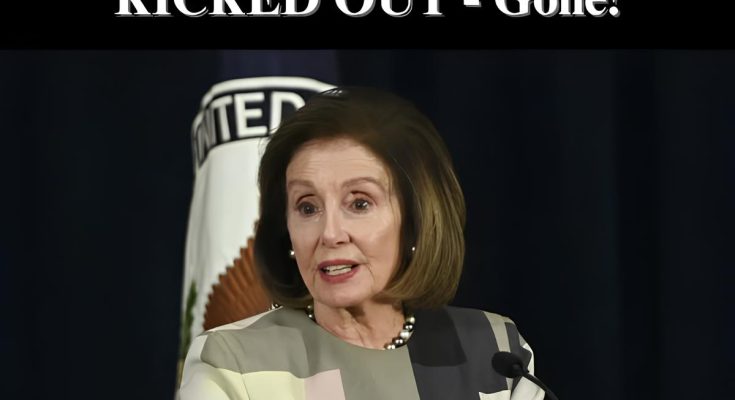Former House Speaker Nancy Pelosi made references to non-existent sections of the U.S. Constitution during a vehement criticism of President Donald Trump, who had ordered California National Guard troops and U.S. Marines to Los Angeles to safeguard federal agents and property in response to escalating riots in the area.
“I hope the president would read Article 10 of the Constitution, and I urge all of you to do that, as well,” Pelosi stated around the 49-second mark, as Democratic lawmakers behind her nodded in agreement. “Because section 12046 of Article 10 states that the National Guard cannot be summoned by the president without the governor’s consent.”
However, there is no “Article 10” in the Constitution; it consists of only seven articles, which delineate the roles and responsibilities of each branch of government: Executive, Judicial, and Legislative.
Pelosi likely intended to refer to Title 10 of the United States Code, which outlines the regulations regarding the deployment of the “National Guard in Federal service.”
Nevertheless, Pelosi was incorrect in asserting that presidents lack the authority to federalize National Guard troops. One of the Democratic Party’s prominent figures, civil rights-era President Lyndon B. Johnson, utilized Title 10 to federalize Alabama National Guard troops to protect civil rights demonstrators, according to the Washington Examiner.
The statute clearly indicates that the president has the authority to activate the Guard for federal service, with orders that ‘shall be issued through the governors,’ which constitutes an administrative procedure rather than a necessity for consent,” Matt Margolis stated on Wednesday at PJ Media.
“Federal law has consistently recognized the president’s power to federalize the National Guard, and the Supreme Court has repeatedly upheld the president’s ability to do so without the need for gubernatorial consent,” he further remarked.
Pelosi was also found to be misleading. During the same outburst, she asserted that she, in her capacity as then-House Speaker, “we begged the president of the United States [Trump] to send in the National Guard” prior to the January 6 riot at the U.S. Capitol Building.
“He refused to do so…And yet, in a manner contrary to the Constitution, he has deployed the National Guard to California. There is something fundamentally wrong with this scenario,” she continued.
However, then-Capitol Police Chief Steven Sund rectified the information, posting on the X platform: “FACT: On January 6, I was prohibited by Federal Law (2US1970) from requesting ANY federal assistance, including the National Guard, without first obtaining approval from the Capitol Police Board, which comprised both Sergeants at Arms who reported to Pelosi and McConnell.”
Additionally, President Trump has stated on multiple occasions that he proposed to send in the Guard before his January 6 speech, but Pelosi and others declined the offer. Nevertheless, Trump, as president at that time, could have simply commanded the Guard to be deployed.
In the meantime, recent polling indicates that a majority of U.S. voters are in favor of Trump’s decision to send the National Guard to Los Angeles.
A survey carried out on Monday by RMG Research among 1,000 registered voters revealed that 52% either “strongly” or “somewhat” support Trump’s decision to deploy troops in response to the ongoing street protests.
Additionally, 42% expressed disapproval of the troop deployment, while 7% remain undecided, as first reported by the Daily Signal.
Riots broke out in Los Angeles on Friday following operations by Immigration and Customs Enforcement, leading President Trump to initially send 2,000 National Guard troops, with another 2,000 deployed later, along with 700 active duty Marines. The unrest persisted into this week, resulting in the arrest of over 100 rioters.
When voters were surveyed regarding their approval or disapproval of the actions taken by immigration officials to locate and apprehend illegal immigrants in Los Angeles, 57% of respondents indicated that they either strongly approve or somewhat approve, while 35% disapprove, and 9% are uncertain, according to the outlet.



